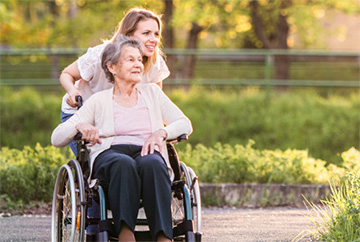A single Healthcare-Associated Infection can cost your nursing home between $5,000 to $15,000!
Nurses are on the frontline of protecting residents from infection, but cross-contamination continues to be a leading cause of nosocomial infections every year.
Healthcare-acquired infection rates in nursing homes have seen a rapid rise in recent years. Living in close proximity to others often means you share everything and nursing home residents in particular share the same air, food, water and medical care. These environments often provide the perfect grounds for the hosting and transmission of various infectious diseases.
Residents residing in a nursing home also tend to be older, frailer, and therefore far more susceptible to illness, which creates unique challenges for infection control. The battle is ongoing and infectious diseases are persistent. Studies show that elderly patients are at a higher risk for developing Healthcare-associated infections (HAIs) in hospitals and nursing homes, and that infection is the primary cause of death in one third of individuals aged 65 years and over.
Addressing contamination issues that contribute to infection should always remain a top priority for your management and staff. While many of the resulting infections are harmless, they take a significant toll on resources available, both human and material, and some can cause serious illness and even death.
What infection control practices reduce cross-contamination?
Cross-contamination occurs when microorganisms (viruses, bacteria, or parasites) are transferred from one person to another through direct contact, indirect contact, fomites, and droplets. It can also happen in a variety of ways such as when hands aren’t cleaned thoroughly after caring for an incontinent resident; or through contact with equipment, such as transfer or repositioning devices, commodes, and urinals.
Contaminants can come from outside, such as on the skin of personnel, or they may be introduced through leakage or when objects are moved. Virtually any object used in healthcare settings can act as a potential contaminant vector. This includes medical equipment, which can act as reservoirs of organisms that cause healthcare-associated infections (HAIs) such as Clostridium difficile (commonly known as C. diff) infection.
While infection control practices such as minimizing environmental pathogens may contribute to a reduction in the risk of cross-contamination they are far from full-proof. While nursing home staff maybe well-versed in standard disinfecting practices, decontaminating surfaces are not always guaranteed to eradicate all germs/bacteria. The evolution of antimicrobial-resistant strains of bacteria now pose a major concern for healthcare providers and patients alike when standard decontamination methods fail.
Additional strategies can include the use of personal protective equipment, barrier precautions, spore testing of room environmental surfaces, hand hygiene, and appropriate cleaning and disinfection processes to clean medical devices and equipment.
What are the consequences of cross-contamination on residents and staff?
Nursing homes have been identified as a high risk for infection rates due to residents’ compromised immune systems and the frequent contact that staff members have with residents. In fact, between 1.6 and 3.8 million HAI occur annually among vulnerable populations in U.S. nursing homes.
Common infections in these settings include urinary tract infections, respiratory tract infections, gastrointestinal infections such as Clostridium difficile (C. diff), and skin and soft tissue infections.
C. difficile in particular, is an emerging cause of infectious diarrhea with some estimates indicating that anywhere from 8–33% of residents treated with antibiotics end up acquiring C. difficile.
This bacteria poses a grave challenge for infection prevention and control in nursing homes. It persists in the environment as spores that contaminate inanimate surfaces such as bed rails, furniture, toilets, commodes, bedpans, weight scales, therapy, and medical equipment. Outbreaks become difficult to manage because they continue to occur despite identifying contaminated units or residents. This increases the possibility for cross-transmission to other vulnerable older adults, as well as HCWs and visitors. The surfaces contaminated with C. difficile can remain highly infectious for months, and routine disinfection or cleaning with detergent may not eradicate or reduce spore contamination.
Can you reduce cross-contamination and stop the spread of infections?
A single Healthcare-Associated Infection can cost your nursing home between $5,000 to $15,000. Our body fluid management products offer innovative alternatives to traditional methods of preventing and controlling HAIs. Developed with our in-depth understanding of body-fluid management, our single-patient concept has revolutionised infection prevention in health facilities worldwide.
Learn how Hygie can help you prevent and control cross-contamination risks in your nursing home.


